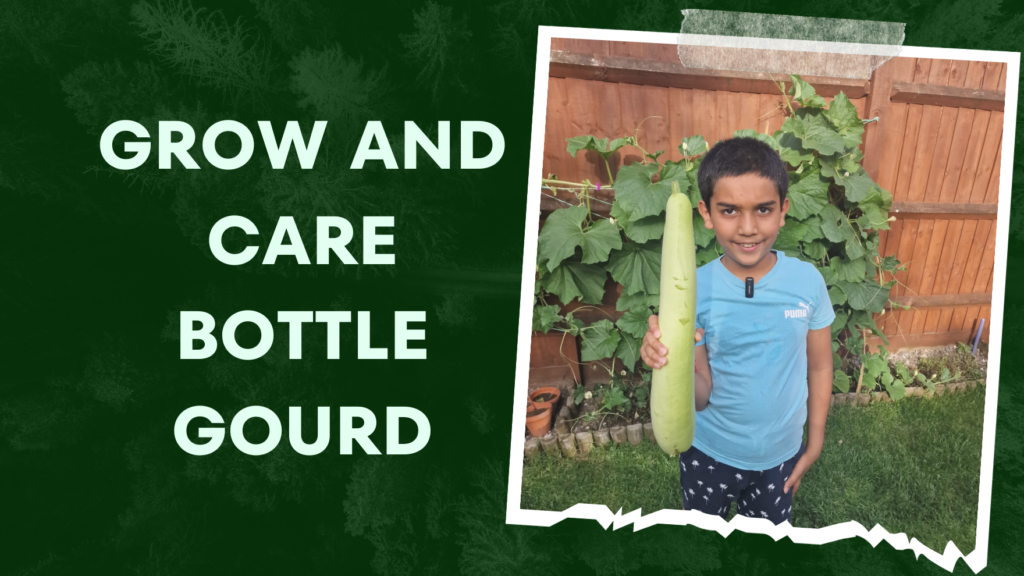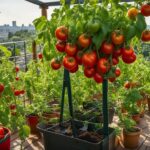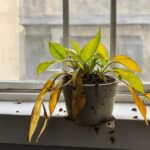How to Grow Bottle Gourd (Lauki) From Seed to Plant in the UK, Europe, or the United States, Planting in a container, uses, Essential care Tips about natural and hand pollination, identification of male and female flowers
Bottle gourd, scientifically known as Lagenaria siceraria, is a type of vegetable that belongs to the Cucurbitaceae family, commonly referred to as the Cucumber family. It is also known as Calabash and goes by the name Lauki in India. Bottle gourd is a well-known and widely grown fruiting vegetable in the Indian subcontinent and around the world. With its unique climbing vines and distinctive milky green fruits, it offers both culinary and cultural significance. In this article, we will provide you with a comprehensive guide on how to plant bottle gourd, from seed to plant.

What is the use of Bottle Gourds?
Bottle gourd is a versatile vegetable known for its delicate flavor. It can be used in a variety of culinary applications, both in sweet and savory dishes. In India, it is commonly used to prepare vegetable dishes, chops, koftas, and Halwa. Beyond its culinary uses, bottle gourd is an excellent low-calorie health food, packed with essential vitamins, minerals, and water content.
You can also read about How to Grow and Care for Curry Leaf Plant and Tree
How to Grow Bottle Gourd from Seed?
Growing bottle gourd from seeds is a straightforward process that can be done. However, it is best to plant seeds during the summer and monsoon seasons. For those of us living in colder climates, like the UK, Europe, or the United States, it’s advisable to sow your bottle of gourd seeds indoors around the second week of March. This gives your plants plenty of time to grow before being transplanted outdoors in May. You can purchase bottled gourd seeds online. Here’s how to grow bottle gourd from seed:
Germination and Planting the Seeds:
Two Seed Germination Methods:
We use two methods for seed germination, and we’ll walk you through both of them.
Method 1: If you’re in a hurry and want your seeds to germinate within three to five days, follow this method.
- Use a nail clipper to remove the horns at both ends of the seed. Be careful not to damage the seed inside; you only need to remove the outer shell.
- Place the seeds on a folded kitchen tissue, about half an inch apart.
- Fold the tissue over the seeds.
- Soak the tissue with seeds in water, then gently squeeze out excess water.
- Place the tissue in a plastic bag to retain moisture.
If you have a heated seed propagator or plant grow lights, put it in there, or find a warm spot in your house maintaining a temperature of 25 to 30 degrees Celsius. Your seeds should germinate within five days.
Method 2: This method is simpler and involves soaking the seeds in Epsom salt water overnight.
You can also read about How To Save Tulsi Plant From Dying
Transplanting the Seedlings:
Once your seeds have germinated, it’s time to transplant them into containers. Pre-dampen your soil, but don’t make it too wet. Place the germinated seeds in the soil, ensuring the root end goes down and the horns point upward. Cover the seeds with soil, about half an inch deep.
Growing Your Bottle Gourd Plant:
After about six to seven weeks, you should have healthy bottle gourd plants ready for outdoor planting. However, remember that you should only move them outside when the weather is warm enough. This usually occurs around the first or second week of May in cold countries like the UK. Ensure you harden off your plants before transplanting to avoid shock and stress.
Bottle Gourd Plant Rapid Growth:
Bottle gourd seedlings grow quickly and develop a climbing habit quite fast. To support their upward growth, install robust trellis structures or let them trail on the ground, climb on poles, or even your house’s roof.
Bottle Gourd Plant Pruning:
To encourage branching, periodically pinch off the young plant’s growth tips.
Bottle Gourd Plant Flowering and Pollination:
In the second month, the plant will produce separate male and female flowers. After pollination, female flowers will bear small gourds beneath them. If there’s an excess of male blooms, you can remove some of them to ensure optimal fruit development.
How to Identify Male vs. Female Flowers in Bottle Guard Plant?
When you look at a bottle gourd plant, you’ll notice two kinds of flowers: male and female. It’s like a special feature of this plant.
- Female Flowers – Female flowers are easy to spot because they have a big lump just under the blossom. This lump is like a baby bottle gourd. It starts growing after the flower gets pollinated. So, if you see this lump, it means this flower has turned into a female flower.
- Male Flowers-Male flowers are different. They don’t have that big lump under the blossom. They look more straightforward, like just a stem under the flower. This makes them different from the female flowers.
Why Pollination Matters?
To get those tasty bottle gourds, you need pollination. Pollination is like a magic trick that turns flowers into fruits. Without it, the fruit won’t grow.
- Natural Pollination – Sometimes, nature does the pollination for us. Bees and even the wind can help the plant move pollen from male to female flowers. This pollen is like the magic dust that makes the flowers turn into fruits.
- Hand Pollination – Sometimes, we can also help the plant by doing the pollination ourselves. This is called “hand pollination.” You gently rub the male flower’s pollen part onto the female flower’s stigma. It’s like playing matchmaker for the flowers.
Essential Care Tips for Successful Bottle Gourd Plant Gardening
To ensure a bountiful harvest, proper care of the bottle gourd plant is essential. Here are some key care tips:
- Sunlight: Bottle gourd thrives in a sunny, open environment.
- Soil Enrichment: Apply a mixture of coco peat and well-rotted manure in equal parts on top of the plant. Repeat this process 2-3 times during the growing season.
- Watering: Bottle gourd requires consistent moisture to grow well, so maintain a regular water supply. Bottle gourds require careful watering. During active growth, especially when bearing fruit, water them daily. Slow, deep watering allows roots to absorb moisture effectively. Use a fine mist on hot days to avoid drenching the leaves.
- Mulching: To retain soil moisture, apply mulch like wood bark or straw. These can be purchased at garden centers, helping prevent rapid drying of the soil and protecting against wind.
- Pruning: Regularly stop and pinch the climber to promote healthy produce and plant growth. Encourage side vine growth by pruning the main stem after 10-12 leaves have formed. This increases female flower production and aids in hand pollination.
- Hand Pollination: To get those tasty bottle gourds, we need natural or hand pollination
- Feeding or Fertilizer: Bottle gourds are nutrient-hungry; ensure they receive proper nutrition throughout their growth cycle, especially during fruiting.
How to Grow Bottle Gourd in Pots / Containers?
If you have limited space, bottle gourds can be successfully grown in containers or large grow bags. Follow these steps:
- Container Selection: Choose a 14-inch container or a large grow bag and fill it with a high-quality potting mixture.
- Soil Enrichment: Use an organic vegetable mix to provide the essential nutrients that bottle gourds need. Ensure you grow only one plant per container for maximum growth.
How to Harvest Bottle Gourd?
Harvesting bottle gourd is the result of your efforts. Typically, after 2-3 months from seed sowing, the harvesting season begins and lasts for approximately 6-8 weeks. To ensure you pick the gourds at their prime, look for soft, smooth-surfaced fruits. You should be able to scrape or press your fingernail through the skin. When the time is right, use garden shears to snip the bottle gourd from the plant.
Conclusion:
Growing bottle gourd can be a rewarding experience, and with the right care and timing, you’ll have a bountiful harvest. We hope this guide has been informative and helpful to all the new gardeners out there. By following these guidelines, you can cultivate this versatile vegetable, enjoy its culinary benefits, and contribute to its rich cultural heritage. Whether you have a spacious garden or limited space, bottle gourd can find a place in your home garden.




